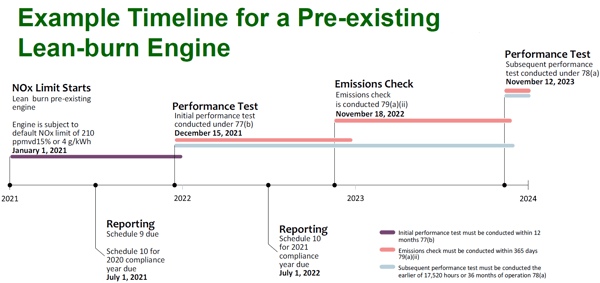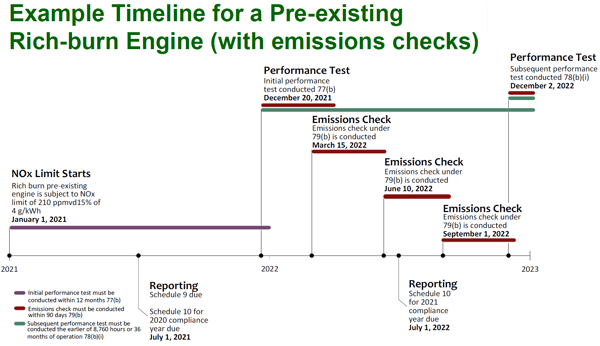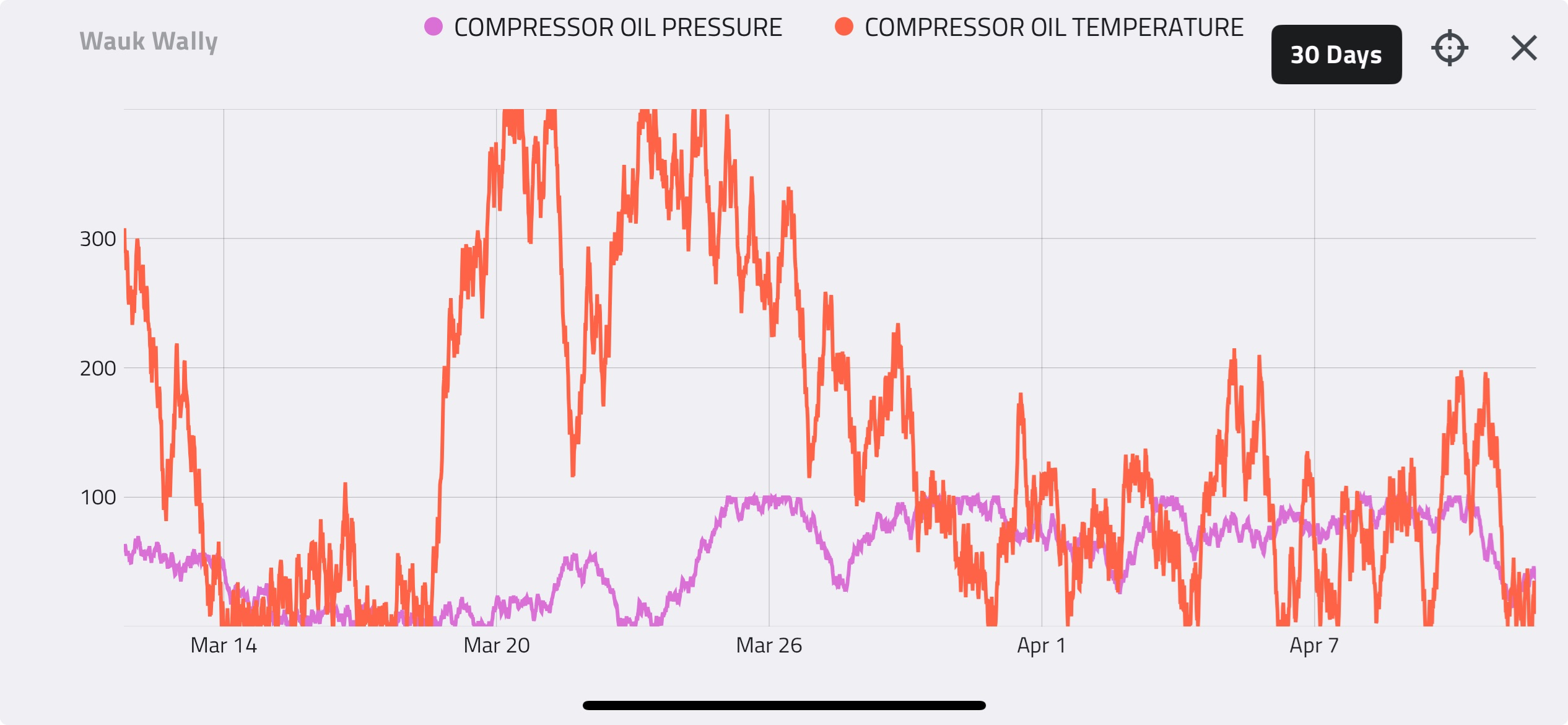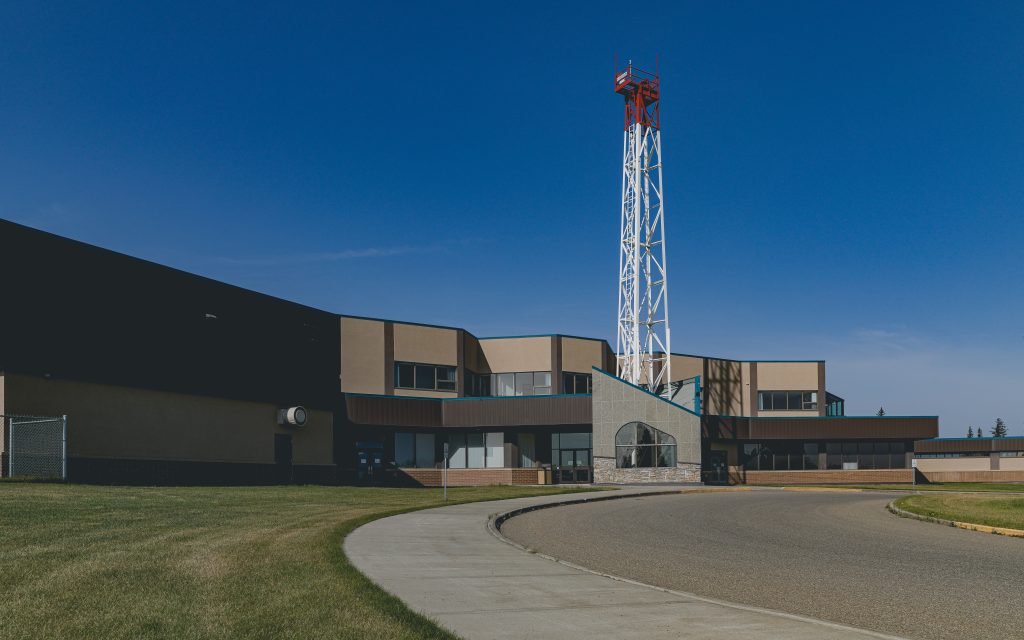Houston, TX |
Performing emission tests and reporting those results to SWIM is a major part of achieving compliance with MSAPR, and with the help of some explanatory material from Environment Canada and Enalysis®, we have the tools to help! Environment and Climate Change Canada hosted a session in Calgary, Alberta on November 19 and 20, 2019 to provide an overview of the MSAPR regulations and answer questions from industry. Questions ranged from allowable testing procedures, compliance approaches between subset and subgroup, penalties for non-compliance all the way to questions surrounding detailed timelines for testing.
Between this session and in conversations with our customers, the topic of testing timeline is a commonly asked question, and one that Environment Canada did a particularly good job answering at these sessions. The reason this is a commonly asked question is because the timeline when testing needs to be performed is complex and sometimes confusing. For example, we learned in the session that if a modern engine is classified as a replacement engine and the default emissions value is used (2.7 g/kWh or 160ppmvd15%), the engine is not subject to recurring tests. Another source of complexity and confusion is that emissions checks are performed on a calendar basis whereas performance tests are performance based on both run hours and/or a calendar basis, and timing differs based on your engines assignment as default, special default, non-default lean or non-default rich, and meets a power threshold.
Although simplified, the following diagrams created by Environment Canada outline the two most common use cases. The first is a lean burn engine in a subset highlighting its subsequent testing and reporting schedule. Note that the initial performance test can be performed anytime in 2021, and in this example, is not performed until December 15, 2021.

The second example is a rich burn engine in a subset highlighting its subsequent testing and reporting schedule. Note that there are two different approaches for testing rich burn engines, and the option shown here is emissions checks being performed every 90 days to extend the performance test interval to the earlier of 8,760 hours or 36 months. The other option not illustrated would be to do performance tests instead at the earlier of 4,380 run hours or 9 months.

To alleviate confusion and uncertainty for our customers utilizing the MSAPR Module in Enalysis®, we created the Emission Test Scheduling Report to ensure our customers are performing their tests on time to achieve compliance. The Emission Test Scheduling Report will outline when both the next performance test and emission check are due based on your current operating hours, removing the uncertainty and confusion around when those tests are required.

If you want to learn more about Detechtion's MSAPR offering or what steps you should be taking to ensure your MSAPR compliance, be sure to contact us!



